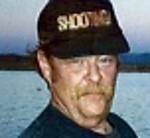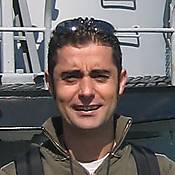Hard on the heels of my first Mirage kit effort with the ORP Wicher, I have decided to take a little smaller effort with a much simpler kit from the same manufacturer, the Hiddensee Tarantula I kit in 1/400 scale.

It is a lot smaller as far as parts count goes but does share some of the same niceties as well as suffer from a few of the same illnesses. The destructions have you build the accompanying base first. The two end stand parts had some serious ejector pin issues which I sanded smooth first off. The crossbar had a bit of a problem with an uneven side from sinkage when the tree cooled after being molded so I used the same sanding sticks to sand it down flat then smooth it out. The litle hull was all right as far as any sort of issues and once I cleaned the sprue connection spots up and ran its gluing surfaces over a bit of 400 grit paper to guarantee that they were flat; glued together nicely with some liquid Testors cement applied with a brush from the inside.
The main deck has some nice detailing with hatch covers, a breakwater, capstans, anchor chain and the bases for the chaff dispensers and other bits and bobs. When I dry fit the two parts together, I thought that this is gonna be way too easy. So much for my thoughts. I wound up with a gap all the way around the edge that needed some filling.. Not satisfied with that fit issue I decided that I would also glue the fantail bit that has the two hatch covers on there that are prominent parts of the real ship. I am glad that I did, there was also a gap around that part. At the deck edge on the fantail is a small box shape that was the only thing that prevented sanding the edge easily so I used a nice sharp and new #11 blade to remove the part before I masked the whole thing up to leave as little of an area to have to apply putty to as possible. This would preserve all that lovely detail and making it much easier to whittle down my putty lines. After sanding most of the putty off with the masking tape still in place, I worked at it until I could see a white line with the gray color of the plastic on either side of it, I removed the tape and finished sanding it smooth. The real ship is pretty much seamless in that area so I had to do something there. Once the sanding chores were done, I glued the small box shape right back where I had removed it from on the fantail. The portholes below the deck edge were a little shallow after all my efforts so I used a drill and pinvise to deepen them a bit, not going all the way through.

The bridge details are molded onto two side panels and a front panel. While the details mostly consist of two doors on one side and a square raised area with a single door on the other side panel with a similar square patch up high aft of the small side windows, the real ship has a bit more than that.
As a matter of fact, looking at the pictures of the real ship that is at Battleship Cove parked next to the USS Lionfish, it would seem that Mirage missed a rather prominent bit of structure in front of the bridge. There is a single story section in the front of the bridge that they completely missed molding onto the kit parts. While it appears as extensions of the sidepanels in the instructions in section III and in a later drawing on the destructions in section VIII it sort of magically appears since it is not mentioned anywhere else. Oh well, doing a bit of research has saved working it over after the fact so to speak, I can go ahead and make up the needed parts from scratch while it is in such an early stage of construction. Perhaps this may be one of the reasons that this kit was on sale for the princely sum of only $4.59 at Squadron.



It always pays to do a bit of surfin', er, research when you decide to start one of these things. Most subjects, whether they be ships, planes, armor or even figures have found a place on the web somewhere. Just typing the name or class or model into the search box on your homepage will usually reveal more than a few places to locate pictures or drawings of the real deal or even build articles or completed models. Finding a goof like this one is a fluke in most modern day kits. Companies spend a lot of time and effort to turn out well done kits but stuff does happen and when it does, you just have to do a bit more to come up with a solution.
Well, I am back to work on this as wellas the weathering and oil paint washes dry on the ORP Wicher, I will be finishing that one up and adding the photos in a day or two to the build article as well as posting more on this little wonder as I work out the details and see if there is any more little engineering oddities to have to deal with.



































